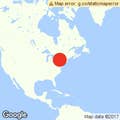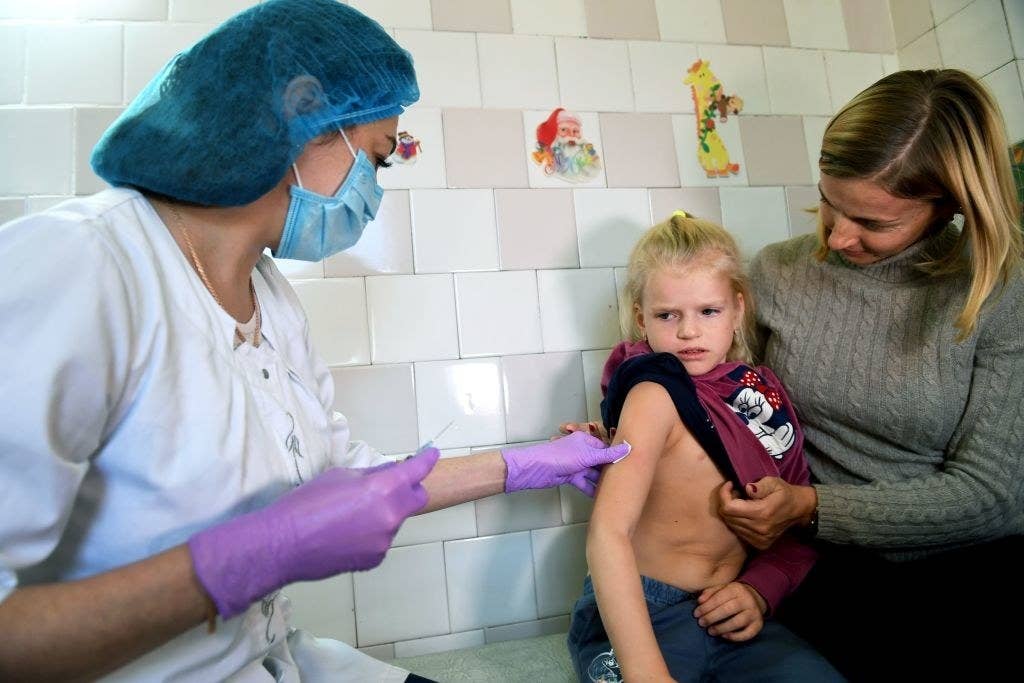
Europe’s record-breaking measles epidemic — more than 41,000 cases so far this year — has health experts worried that a long simmering distrust of vaccines there will spur future epidemics of this and other preventable diseases.
At least 37 people in Europe have died of measles in the first half of 2018, according to the World Health Organization, with seven countries — France, Georgia, Greece, Italy, Russia, Serbia, and Ukraine — reporting more than 1,000 cases.
Distrust in vaccinations in those seven countries tracks with measles outbreaks across Europe “quite neatly,” Heidi Larson of the London School of Hygiene and Tropical Medicine told BuzzFeed News.
It’s only in recent years that surveys have revealed the popularity of the anti-vaccine movement in Europe, brought home by this year’s measles outbreak. France, for example, has the highest level of distrust, with roughly 40% of its population in surveys viewing vaccines as unsafe, driving nearly 2,600 measles cases there this year. In Italy, where more than 20% of the population distrusts vaccines, there have been more than 2,000 measles cases.
In Ukraine, about 25% of the population views vaccines as unsafe. That, plus its ongoing war and political unrest, explain the staggering 12,000 cases of measles reported there this year, experts say.
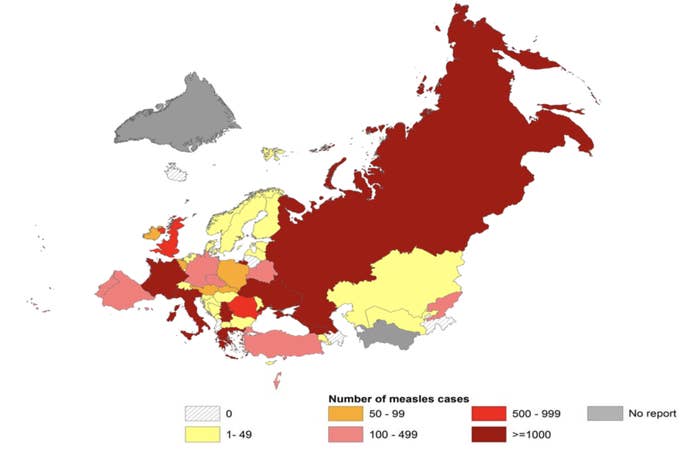
The European numbers are particularly striking compared to the US, where a few small outbreaks of measles — 125 cases at Disneyland in 2015 and 65 in Minnesota in 2017 — sparked headlines.
“While that outbreak from Disneyland was getting all the attention, there were 600 cases in Berlin, and no one said anything,” Larson said. “It's incredible.”
Although about 18% of the US population distrust vaccines, only about 1% of US toddlers don’t get their shots before starting school. So far the Centers for Disease Control and Prevention has tallied just 124 measles cases in 2018.
“Here the US is ahead and Europe, which is supposed to be more equitable in health, is behind,” Larson said.
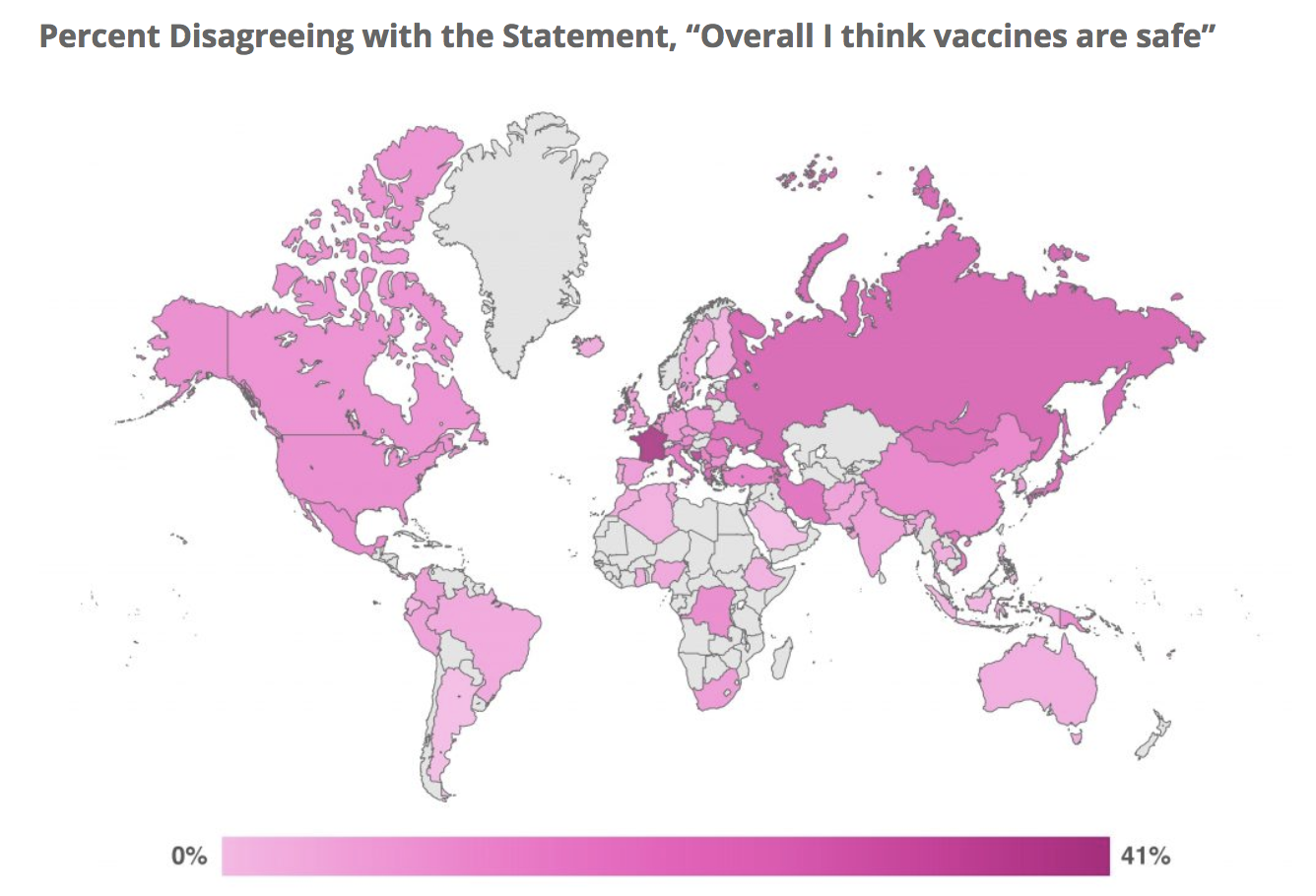
A lot of the European distrust of vaccines is seen as a hangover from Andrew Wakefield’s repudiated 1998 study in the Lancet linking autism to vaccines, sparking a worldwide anti-vaccine movement. But Larson said that the attitudes in Europe tap into a wider, deeper cultural skepticism of medical authority that stretches in patchwork fashion across the continent, particularly among poor and marginalized people “who might take out their distrust of authority on vaccines.” (Meanwhile, some countries such as Finland, with an abiding confidence in vaccines, handle any rare adverse side-effects of immunizations with little controversy.)
Making things worse, some populist politicians in Europe, such as Italy’s Bepe Grillo, have publicly called vaccines dangerous, drawing comparisons to President Trump’s flirtation with the US anti-vaccine movement.
Since the advent of the measles vaccine in the 1960s, most people no longer get its signature red rash and cough. But because the virus is incredibly contagious, even small pockets of unvaccinated people can trigger an outbreak.
“Measles is the canary in the coal mine that flags us to expect more outbreaks — of not just measles,” Larson said.
Mumps, which can trigger hearing loss, and rubella, which is dangerous to pregnant women, are two other infectious viruses similarly prevented by vaccines and among those most feared to revive in outbreaks due to people skipping vaccinations. The measles-mumps-rubella (MMR) vaccine is 97% effective.
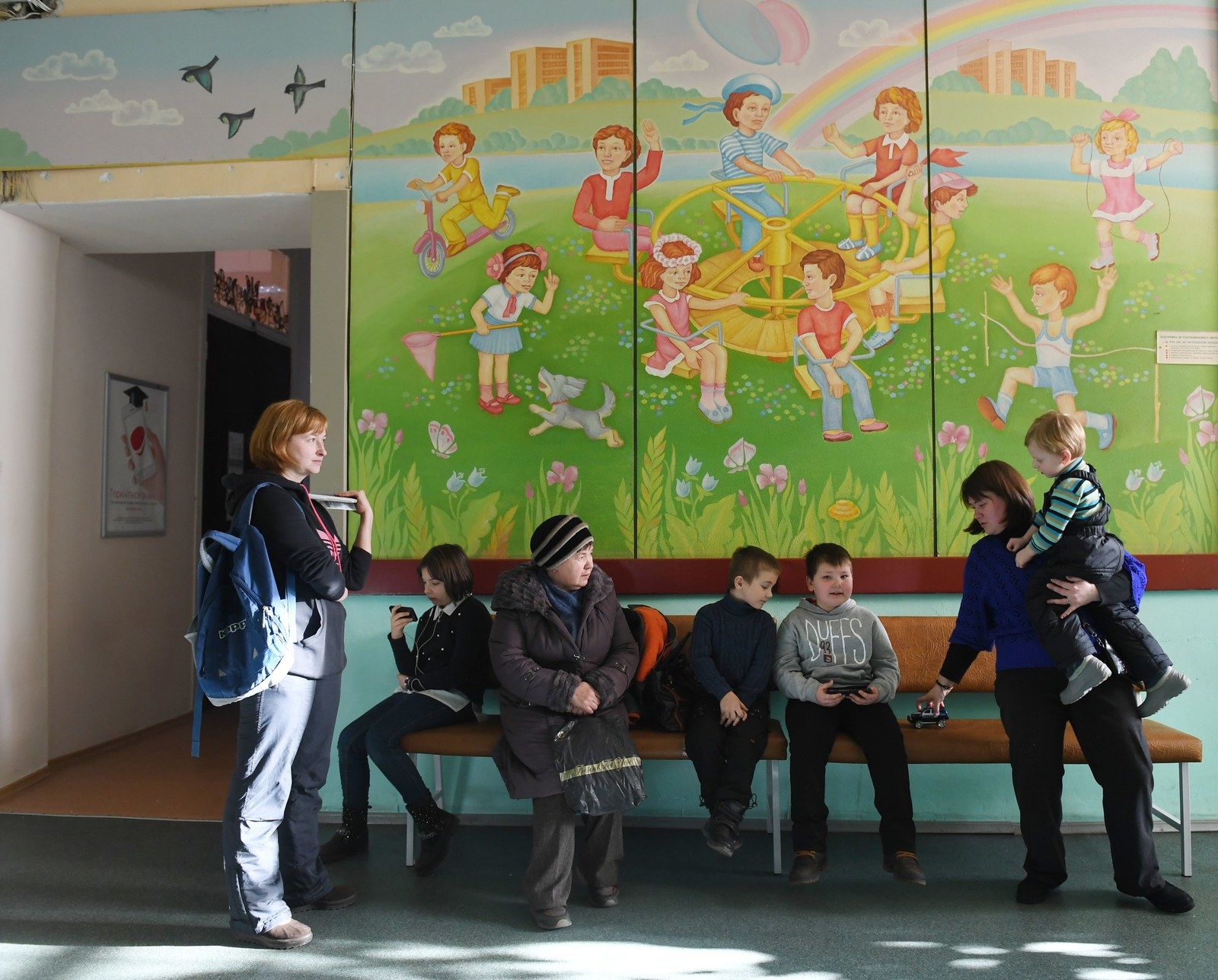
The epicenter of the European outbreak is Ukraine, where many adults and teens have missed vaccination in the tumult of the last decade. The Ukranian Ministry of Health this May extended make-up immunizations to children, and later to adults in “high-risk” jobs such as teachers and doctors.
Since then, routine vaccination coverage for second doses of the MMR vaccine has improved “considerably,” Siddhartha Sankar Datta of the World Health Organization Regional Office for Europe told BuzzFeed News by email. Now 59% of six-year-old schoolchildren have gotten these second jabs, up from 31% in 2016. “However, challenges in vaccinating adults outside of the defined high-risk groups remain.”
Some European anti-vaccination groups have falsely asserted that the improved rate of vaccination among schoolchildren in Ukraine is causing the outbreak, ignoring the fact that most of the cases are occurring in unvaccinated adults and teens.
In May, an American Journal of Public Health report raised another worry about forces corroding public trust in vaccines, reporting that Russian trolls and antivaxxers are flooding the internet with misinformation decrying immunization safety. (Russia itself has had nearly 1,400 measles cases this year and about 16% of survey respondents view vaccines as unsafe). Nearly half of all tweets about vaccines oppose them, for example.
Since Russia seized Crimea from Ukraine in 2014, a constant state of conflict has existed between the two nations.
“Given the conflict there, I’m sure [Internet trolls] played a role in the outbreak,” Larson said. “But this really is a reflection of a decade of undervaccination.”

